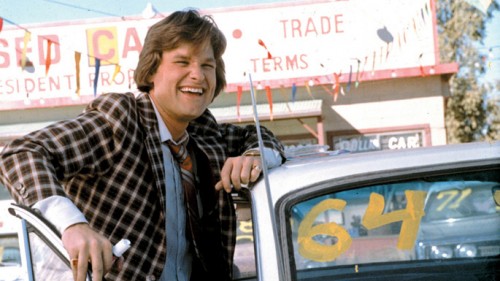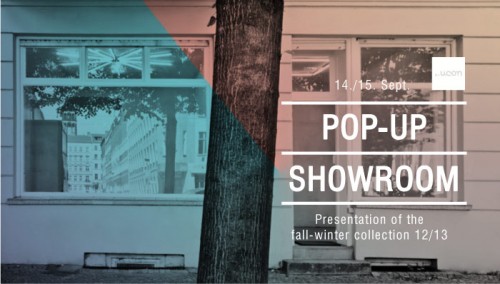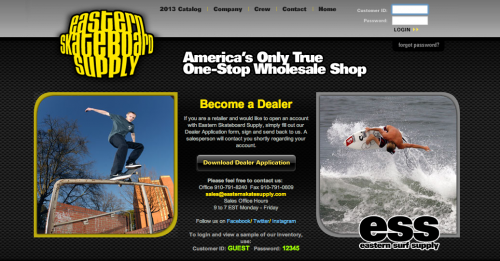
The retail marketplace for rollerblading has changed drastically since many of us first discovered the Team Paradise catalog in the ’90s. The bloom of local shops came and went and came again and then seems to have shuttered for good. The big box stores that still survive, for now, may carry a model or two of RB or K2 skates, but that’s hardly any use to your specialized needs. So you probably go online and order from one of about five places (talking about United States). But of the couple options you have, only two or three actually stock all the items they list on their websites. And as more bladers are pointing out on messageboards and Facebook, why order from a store that has to then order your products from another location? Though I understand the reasons of why, it’s hard to argue that it makes sense or is in any way an ideal situation.
To quickly recap, it’s gotten this way because mom and pop shops got buried under their inventory. Towards the end, it was inventory they didn’t really need, but a cavalcade of cosmetic variance that kept the manufacturers flipping boots but the shops stacking bills. And they started to fold. Today small shops are terrified of inventory — it’s much less risky for them to forgo stocking the item and instead order that size 12 Carbon you wanted from the bigger online warehouse that bought full size runs. For the smaller shop, ordering the skate, paying for it, and then maybe having it collect dust in your back room forever is exactly what you don’t want to do.
And though this allows several retail outlets to continue to survive in our harsh sales climate, it has several inherent problems:
1) Customer support. It’s just a less streamlined supply chain when the items in your order have to be culled together from different offsite locations. Larger carbon footprint, more chance of error, longer wait times. Shops that operate like this do their best, but it’s the most complicated way they could do it.
2) Less overall sales of any skate model. Just simple math. If you used to make 5,000 pairs of any skate model to sell to all the shops, if fewer shops are ordering full size runs, you’re not selling/making as many skates. This has a seemingly infinite number of implications from higher per-unit manufacturing cost, less earning to reinvest in R&D, and just less blades in circulation.
3) Smaller profit for the end retailer. If you’ve got multiple shipping charges and aren’t getting your max wholesale discount, but still have to sell the item at the lowest advertised price, you can’t make the regular profit margin (expected 50% aka ‘keystone’). This means you’re doing more work for less reward.
4) Prevents potential expansion of the sport because quantities and availability are so compressed. People talk a lot about something ‘saving’ rollerblading — like some sort of mainstream media attention will bring thousands of new participants to blading. Maybe that’s true, though a long shot, but given what we’ve just covered, what would happen if something like that went down? If a million people wanted to cop the new Franky Morales skate, where would they get them? Could a manufacturer gear up fast enough to capitalize on the new demand? Not just that, less shops and blades in the world means less chance for people to discover what we do.
It was thinking about all this that lead to a new idea, and I mentioned it on Facebook and people were skeptical. So let me try to explain.
It starts with recognizing the changes in our retail market and not working to make things the way they once were. They may never be like that again. Amazon and iTunes have changed the way people buy stuff and expect to shop for stuff. At least two retailers inside the United States retail market are aware of this and have established themselves as the Powers That Be (PTB) — Roller Warehouse and Aggressive Mall. These are the shops the independents turn to when they need that whatever it is they don’t have in stock for their customer. But I think there’s a way to use this relationship to benefit everyone even more and it starts with something I saw in skateboarding but don’t think blading has ever offered: the shop-in-a-box start up kit. AKA expanding the use of pop-up shops.

UCON did it.
Because skateboard supplies are so universal, big retail suppliers like Eastern Skateboard Supply sell packages to help enterprising entrepreneurs set up their own shops. For a set amount you can get all the items necessary to have a counter display with decks, trucks, hardware, accessories and shit to get you up and running. They’ve been doing this for years, and if you haven’t noticed, there seem to be plenty of places to cop board gear. Maybe this is partly because it’s really easy for someone with the hunger and some cash to throw down and have stuff to sell their homies.

Built to service retailers.
What I propose is this: RW and AMall offer shop-in-a-box kits. Maybe two price points, one at $1,000 and another at $2,000. Or less if they think that’d be better. Whatever. But for that cost the buyer should get a few budget complete skates in the most common sizes, frames, wheels, bearings, and a grip of soft goods like shirts and hoodies. The soft goods could even be branded to whatever shop the supply came from. Because there’s one more catch — these new shops are essentially franchised outlets for the mother shops. If you’re in Rockford, Il and you do a shop-in-a-box with RW, you’re now a sort of RW Rockford. Before you think I’m crazy, here’s why this would be good for both sides.
Ever heard the phrase “location, location, location”? There’s a reason — because good location means good visibility means theoretically higher traffic. So if a local blader installs a retail counter at a skatepark, or in their van to hit the outdoor parks in their area, or has a pop-up tent they take to events and sessions in the area, they are advertising the mothership. That main online retail outlet will likely get more orders from that area. But if a local shopper wants to order something more specialized that the local outlet doesn’t stock, well, as already happens today, the outlet orders from the mothership and gets the customer what they wanted. But unlike today, this is all done with full transparency — which is better for the customer and the overall mechanics of blade business.
If you’re still reading now you might be thinking, “Justin, why the hell did you spend so much time thinking about this?” And the answer is simple: when there were more local skateshops there were more skaters. We need more shops on the ground in cities and town across the country to improve our outreach and visibility. And given that our community has proven it’s adaptable and clever, I think it’s time to harvest a new generation of blade retailers by making it easier to get into the game than ever before. If we lower the barrier of entry for local blade retailers — in part by not forcing them to carry burdensome levels of hard goods inventory — by extension we lower the barrier of entry to get a new kid on blades. And that is job #1. New people on blades, buying blades, putting new dollars into our ecosystem.
*Additional Note: If you have any storefront shop you should stock a few pairs of Doop blades as rentals. It’s never been easier to service this market either, since these blades fit any size and any shoe.
Great idea. I’m sure there’s kinks to work out with licensing and taxes (not to mention the person starting this pop-up shop must be very dedicated and willing to spend a lot of time working for a very small return with little chance of a future), but this is how it has to happen if it happens at all!
Clic N Roll is the perfect example of a pop up store that eventually grew enough to move into an actual shop. Might be worth a story.
http://www.clic-n-roll.com/clic-n-roll-magasin-roller-trottinette.cfm
Thanks for the tip, Frederic.
Thx Freddy! There is some true in this article 😉
Is throwing money at brand new retail really a good basis for trying to expand participation?
Why not harvest the bottom end of the used market and donate a few pairs of skates to likely upstarts every year for next to nothing?
A) UCON did what now?! All I can see from them is that they are a street-wear brand and sold clothes. Looks to me like they cut blading out of their program all together.
B) Since we’re on the topic of skateboards, you can bring in nearly 6 skateboards for every pair of rollerblades on your budget. So 1K or 2K Isn’t anywhere remotely close for this so called ‘shop in a box’ as I blew your 2K budget with about 12 pairs of skates at MFG. wholesale. This included no frames, wheels, or soft goods.
No demand means logical reason to start a shop; Simple as that. If people were asking for blades, the stores that used to carry them (and there are a bunch still out there) would get them. If not, the soul-less big box stores who do anything to make a buck would stock more of them, and people would have a place where they would at least have a baseline entry level selection… But you see, they already have. And the demand drops year after year after year after year. So the little guys dropped ’em and well, the big box store still have them, albeit way less of them.
Getting together a few grand to start a ‘blading’ only store is a sure recipe for failure. So, unless you are willing to latch onto what will already sell (skateboards, snowboards, etc.) and whatever else you think fits in the same groove, there 99% chance you will fall flat on your face.
Which brings me to my next point, good fucking luck carrying any respectable skateboard / snowboard brands without a 5-20K a month overhead in a nice location – AWAY from any preexisting shop carrying the same brands. Not to mention a 20-50K store build out, so that you represent their brands well. Oh, now you want to bring rollerblades in? BOOM! How’s that feel? You just committed suicide. Every respectable brand will cut you off faster than you can complete the phrase rollerblade. They do not want their gear anywhere close to rollerblades.
And I think that is what the problem is – this whole, “if you build it, they will come mentality.” The reality is, there are no fucking bladers, and the bladers that are blading, have aged out or hardly blade (so they don’t buy enough) and the ones that are out there getting it, are broke or get their shit for free anyways. Hate to rain on this parade, but even the bigger shops are struggling. Funding fly by night operations – dudes who will be gone in a year or two because they had no idea what they were getting into only hurts everyone.
Until we can have NEW and ESTABLISHED accounts hitting up skate MFG’s to buy skates, blading will cease to grow – and if we aren’t growing, we’re shrinking.
*means no logical reason – OOOOOPS!!!
Justin @ AMall: I think you’ve made some very good points in your response, and I have a huge amount of respect for the way you took the time to crunch the numbers and how you based your answer both on real estimates and the large body of experience you obviously possess.
I’d really like to see the topic this article addresses become an ongoing conversation though, and I hate to see good ideas get chopped off the knees. I don’t want to speak for JE here, but it seems to me there’s a bit more nuance in his point of view than you might be giving him credit for.
First, while the pricetag for the kind of shop JE is talking about may be too low by your estimation (which is certainly among the MOST expert), I think the exact pricetag and bottom line isn’t really his point. I think he’s talking about the possibility of reimagining what a bladeshop is and envisioning something like a “showroom” style shop that DOESN’T stock inventory—at least not in the conventional way. It may seem like a far out idea, but sooner or later, every industry—even a cottage industry like rollerblading—is going to have to reinvent the way it does business, from manufacturing, distribution, and supply to marketing, advertising, and media. The idea of a “showroom” might be just the ticket, or at least a helpful thought that could trigger new ideas and new thinking.
Second, many of us who have only been on the periphery of blading retail anticipate the fact that other Action Sports manufacturers don’t want their goods sold side-by-side with rollerblading stuff—as if we’re toxic to their image. Whether they think that or not, I still go back to what JE was getting at about a small “showroom” type of store that ONLY promotes blading brands. I think it only seems impossible while we’re wedded to the notion that a shop has to stock a full inventory. The “showroom” style shop—or something like it—would merely act as physical magazine, advertisement, or industry catalogue, and perhaps more than that, it creates a space where rollerbladers can meet up, hang out, and expand their scenes and community.
Which brings me to my third point, which is this: while blading may be “shrinking” relative to our numbers in the 90s, there’s still plenty of room to reverse that trend. And if there’s one thing we’ve seen over the years, it’s that rollerblading is something that anchors its participants in a deep and extraordinary way. We feel a comradeship with each other and the activity we all love so much. While shops lasting only a year or two may be toxic from a retail point of view, I think we’d be wise not to underestimate the contribution small (if fleeting) shops make to the various scenes and communities that are out there. In that sense, I’d have to respectfully disagree with you and suggest that scenes ALWAYS outlast the shops. Rollerbladers have a spirit that endures. The real question should be about how to find new and creative ways promote the companies and manufacturers in ways that profitably promote slow and steady growth—which I think is at the center of what JE was saying in the piece above.
-Frank Stoner